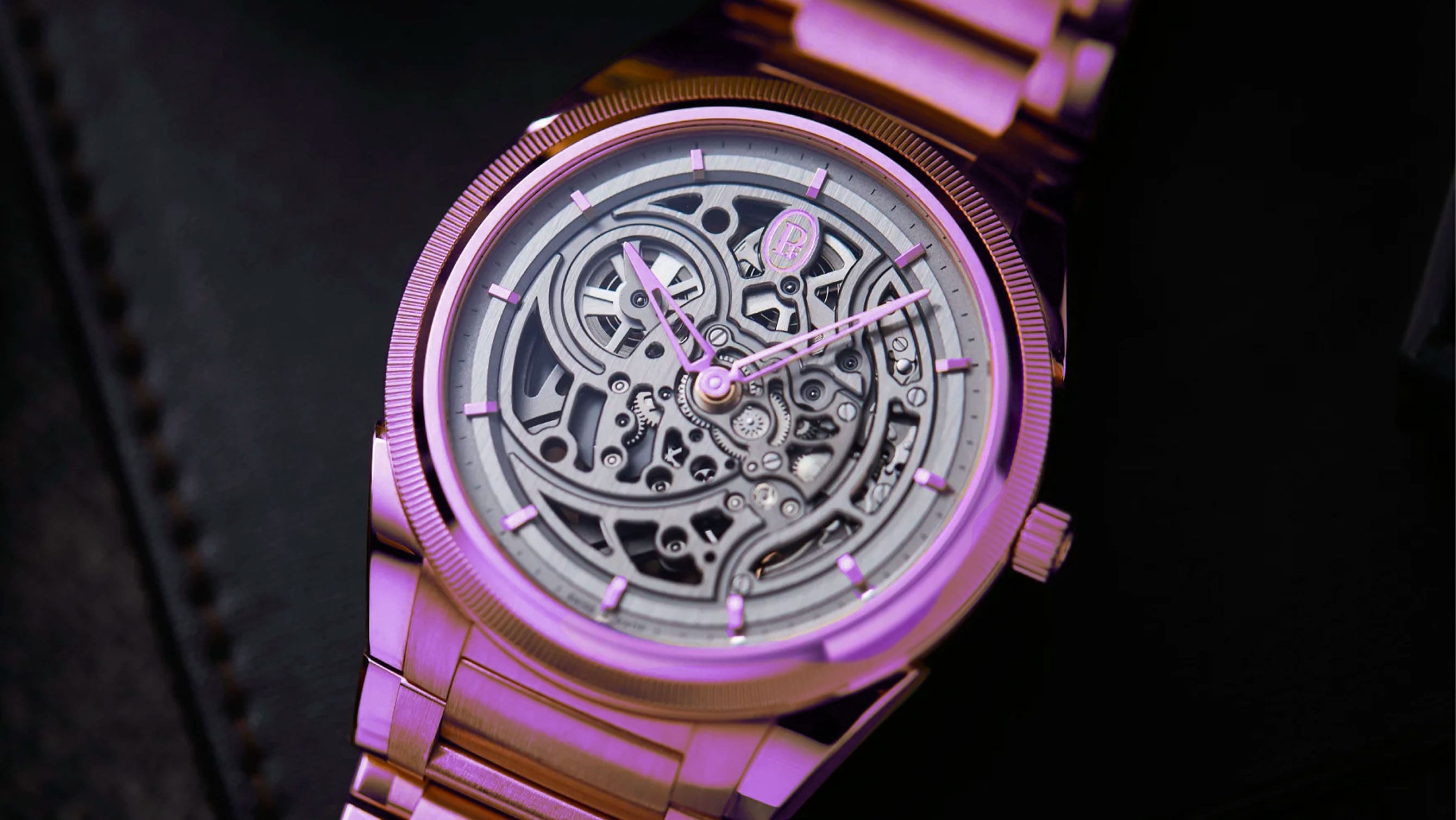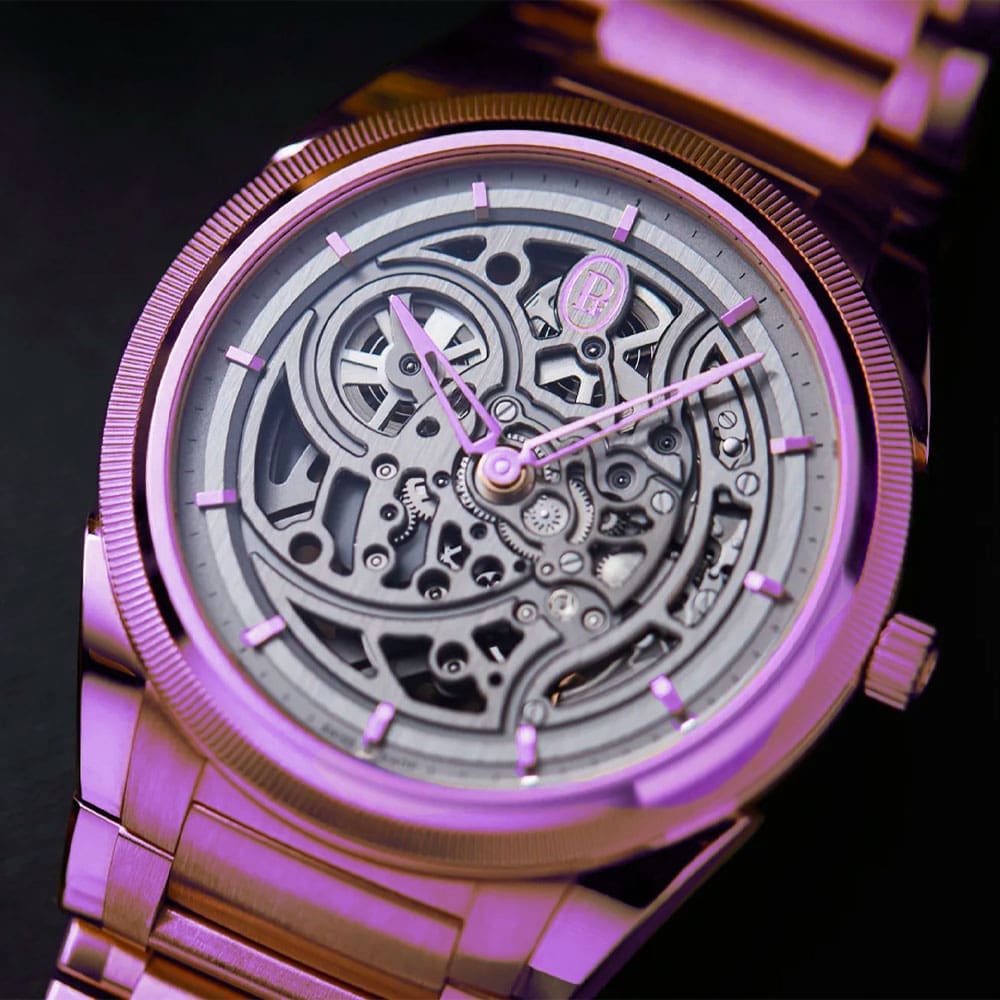What is purple gold?
Fergus NashDespite watchmaking’s inherent throwbacks to the past, innovation is really what has kept it relevant to the modern age. Developments such as PVD coatings, ceramics, and sapphire machining have allowed for colourful watch cases which couldn’t have been dreamed of 50 years ago. There is however one material which hasn’t yet been explored in watchmaking, and its notoriety could be the thing which makes it a perfect contender. Purple gold almost looks like a viral prank when you first see it, but it’s incredibly real and mystically lustrous.
As a material for manufacturing luxury goods, 18k gold has been the highest standard for a long time. With approximately 75% of its composition being pure gold, it’s pretty much the most amount of gold you can have while still retaining structural rigidity and overall durability. The other 25% of its makeup is still important though, as it tends to control the final colour of the material. Yellow gold, the most classic form, uses equal parts of copper and silver to replicate the lustre of pure gold. The warmer tones known as rose gold, red gold or pink gold increase the amount of copper to impart some orangeness, anywhere from 20%-25%. White gold may use one or more white metals such as nickel, silver, or palladium depending on the desired hardness.
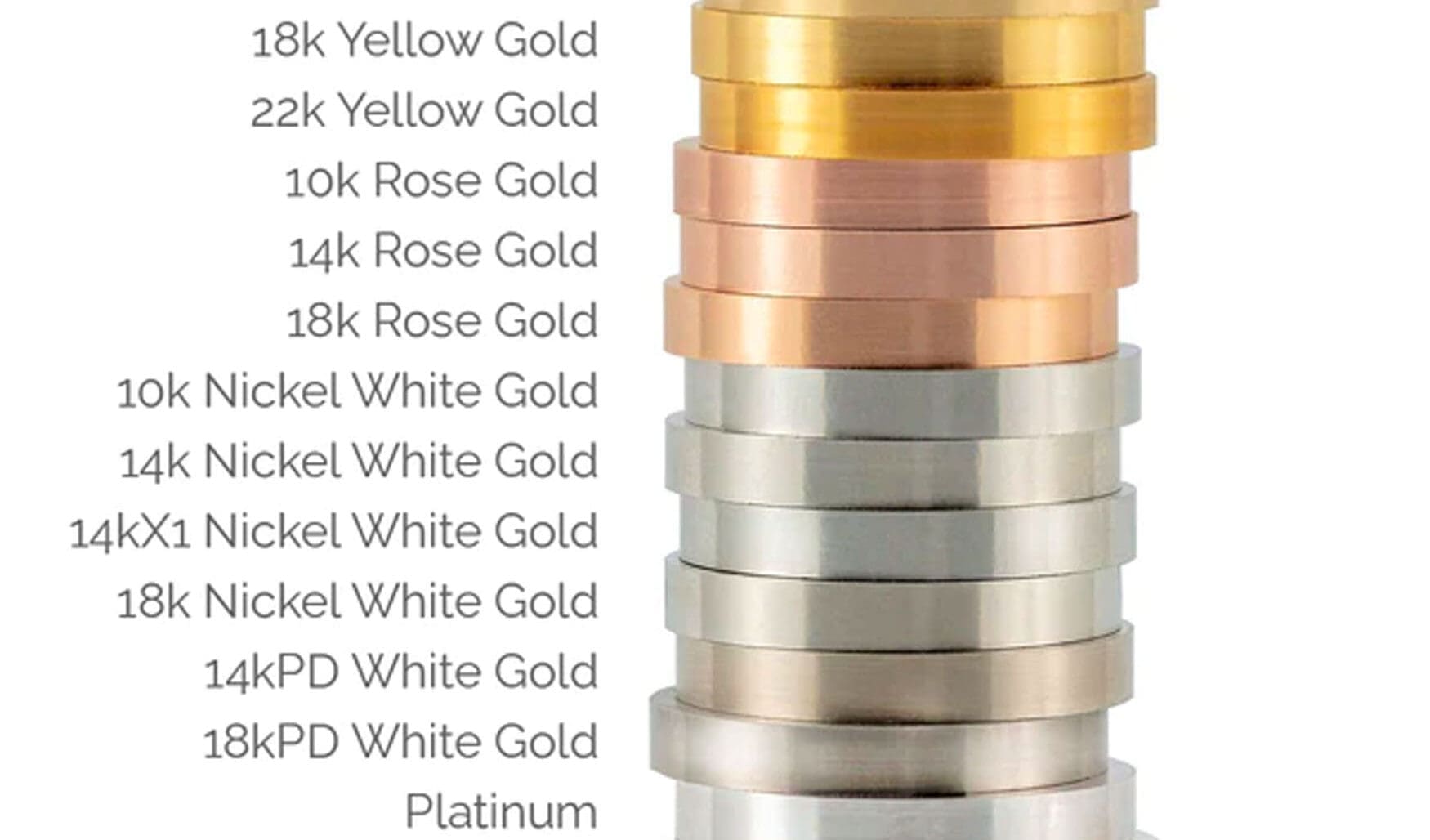
The various alloys of established 18k gold recipes are pretty easy to understand. Purple gold however, is not so simple. You might expect there to be some artificial additive to get the purple colour, or maybe it’s just some kind of coating, but it’s actually its own mixture of gold and aluminium. Imagine yellow, white, and rose gold alloys to be different kinds of milkshakes. You can add syrups to end up with different colours and flavours, but they’re still milkshakes which are easy to drink. Purple gold is not the same, and this marks the technical difference between an alloy and an intermetallic compound. If white gold is like mixing a milkshake, then purple gold is more like using one oxygen atom and two hydrogen atoms to form water. It’s not just a mixture, it’s something new.
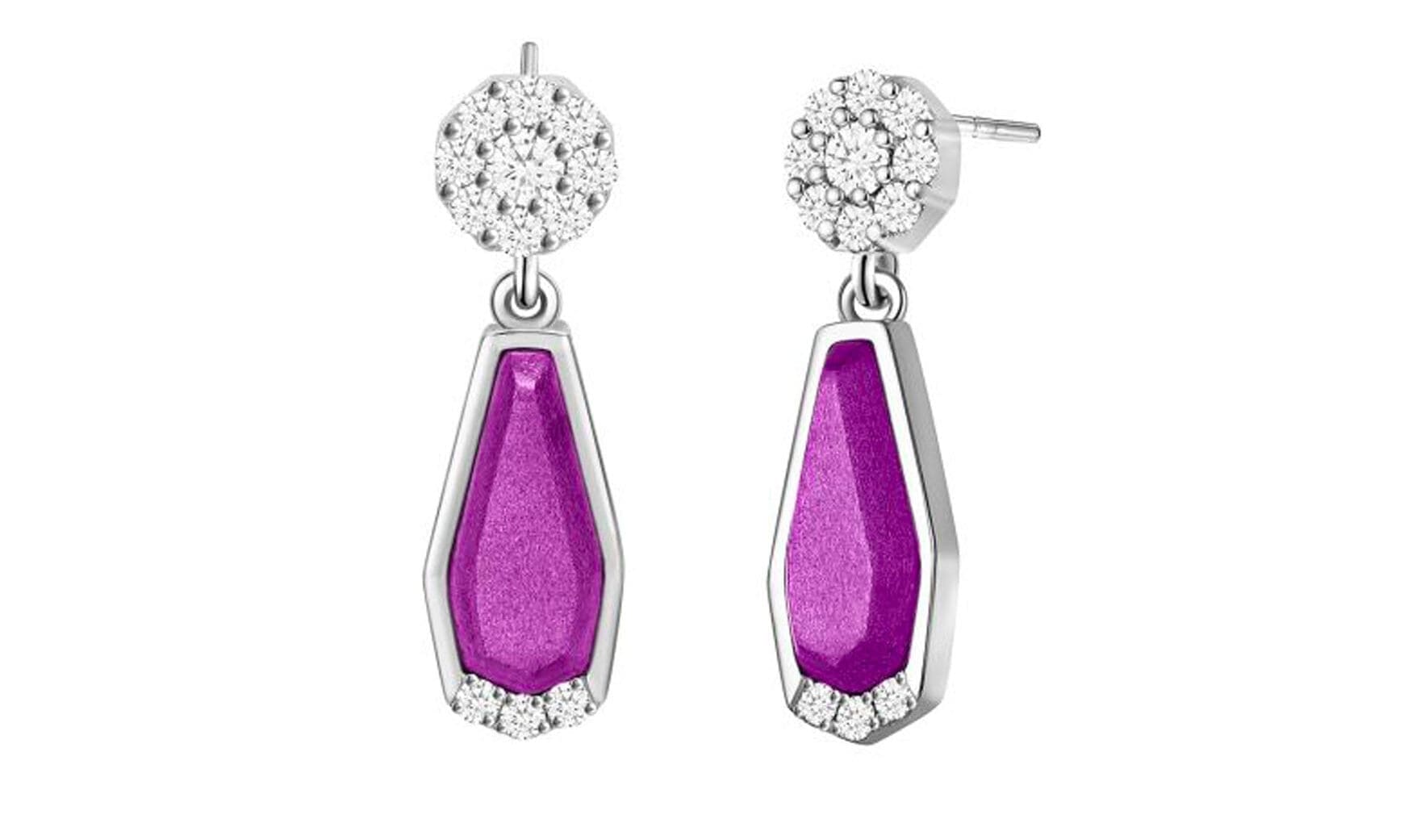
I hope any metallurgists, chemists and physicists will pardon the milkshake and water analogies, because the truth is far more complex. But, they are truthful enough to help understand why purple gold is so hard to make. This topic was recently explored by the chemistry YouTuber NileRed in his journey of making a purple gold ring, and I highly recommend watching his video if you have a spare hour. Essentially, the material wants to fight you every step of the way. Each time you compensate for one complication, you end up having to add yet another stage of processing. On top of that, purple gold is notoriously brittle in many of its forms, which would make it a terrible choice for most jewellery. That said, when the process is perfected, it’s possible to produce stable, durable, and beautiful purple gold.
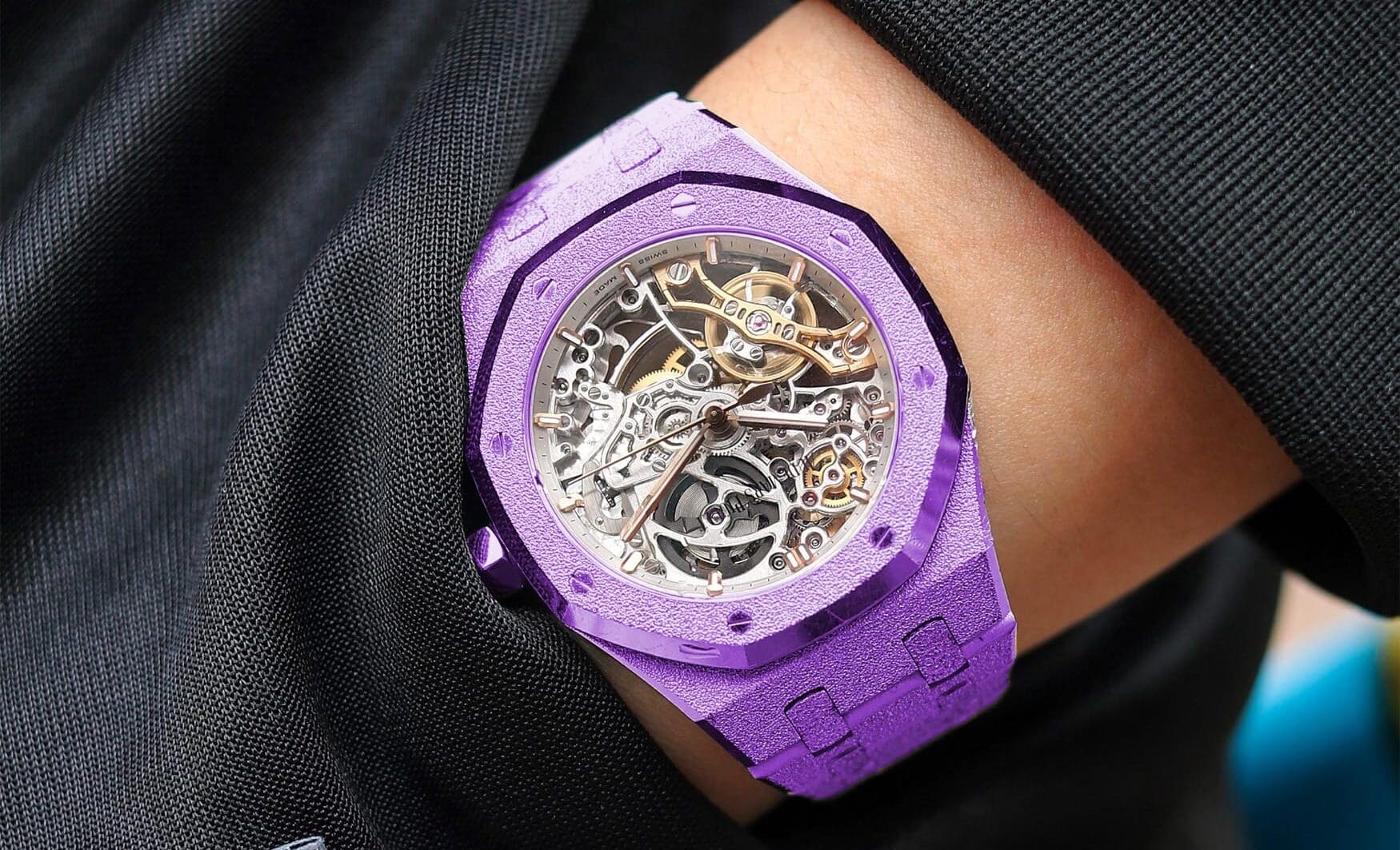
Purple gold was only invented in the year 2000, and so it’s a very young material. Its only “natural” occurrence is actually a dreaded accident known as the purple plague, when gold and aluminium fuse in integrated circuits and cause poor conductivity. There have been a few patented processes published for the making of purple gold, and with NileRed’s recent video, it’s quite likely that there will be renewed interest in perfecting its recipe on a mass scale. That’s where watches could theoretically come in.
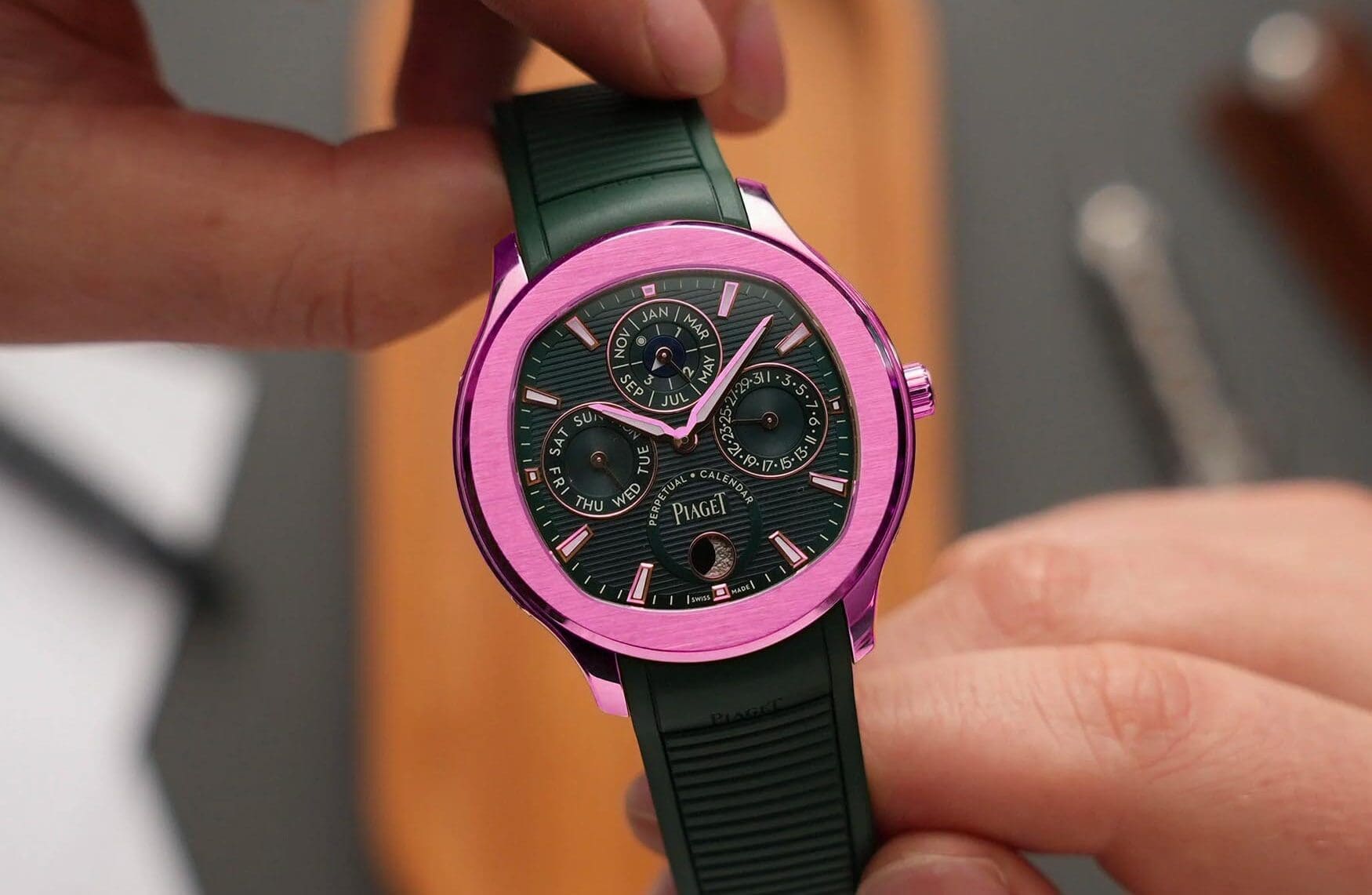
No matter how many watch brands use recycled steel cases, ocean-plastic straps or cardboard packaging, watchmaking is always going to be a fairly wasteful industry. Even affordable watches are a luxury in the sense that they’re not a necessity, and lack of sustainability is still heavily romanticised. Whether it’s a grand feu enamel dial of which hundreds were rejected in quality control, or the sourcing of an incredibly rare material for the case, the idea of scarcity and difficult production just makes watches more alluring. Purple gold is not inherently wasteful like some other materials, however the R&D still required to make a purple gold watch case would make for a substantial challenge. It’s that kind of challenge which will surely draw watchmakers in, just as it did for bright-yellow ceramics, forged carbon or coloured sapphire.
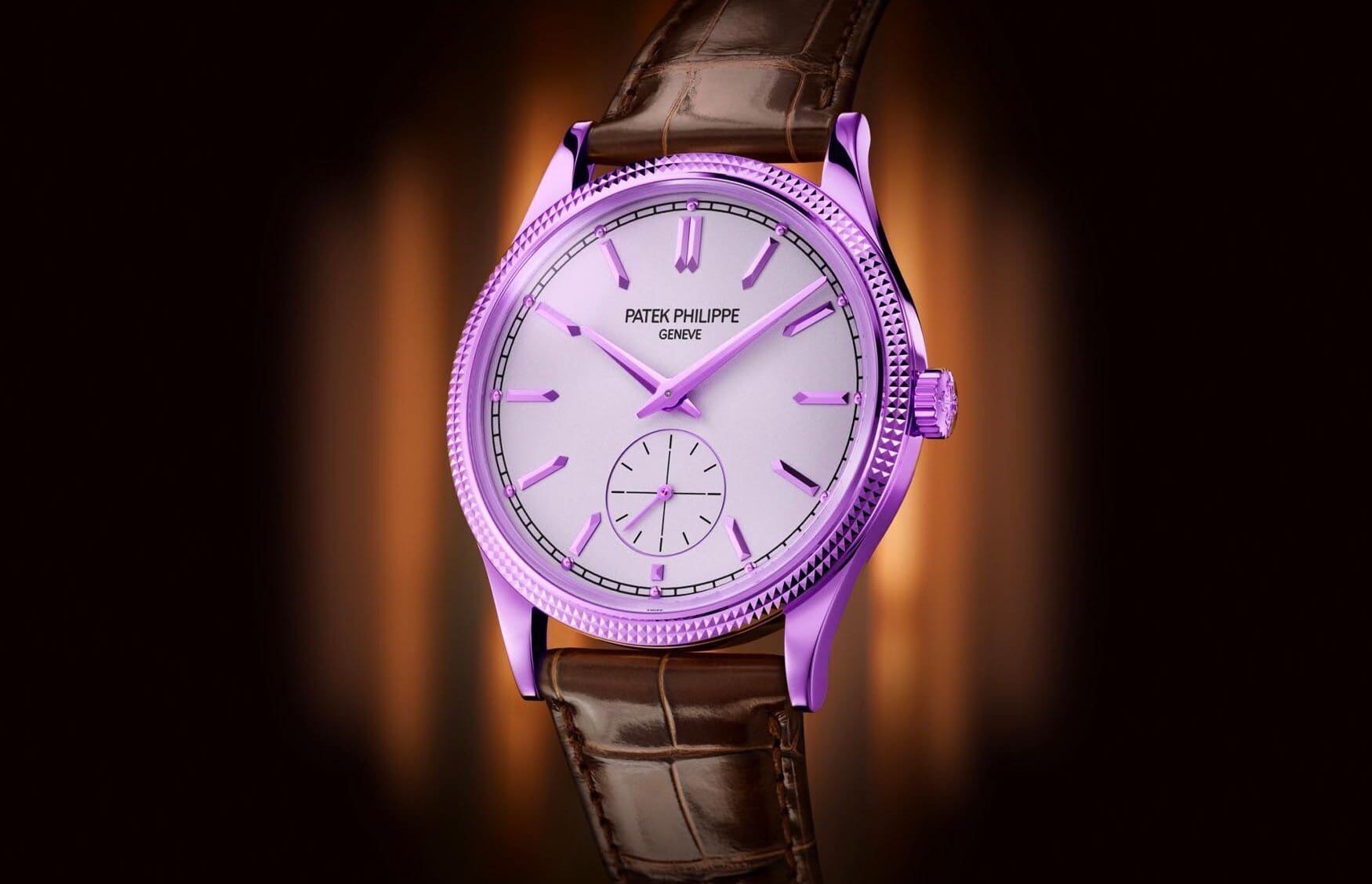
Stylistically, purple gold holds a lot of value for watches too. It’s completely unique and stands out, unlike white gold which can be mistaken for steel and rose gold which some people are getting sick of. The violet hue isn’t overbearing or obnoxious like the purple PVD coatings that some cheap watches have, and it would be intriguing to see what it looks like when brushed, sandblasted, frosted, or finished in other creative ways. Purple dials had plenty of popularity in 2022, so it’s easy to imagine purple gold cases thriving on the wrists of watch enthusiasts in the years to come.




